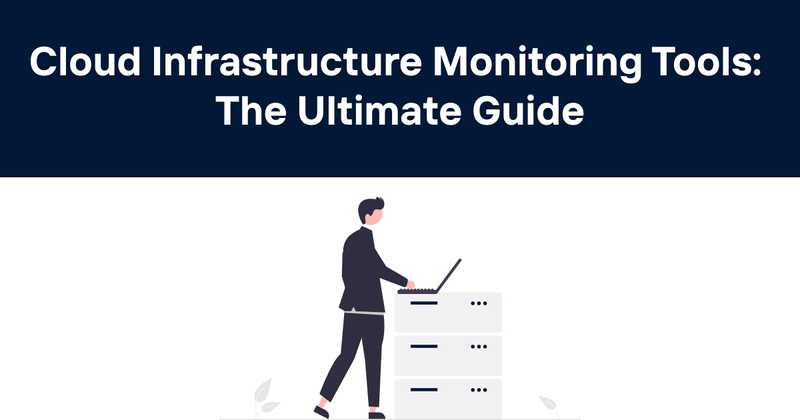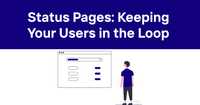Cloud Infrastructure Monitoring Tools: The Ultimate Guide
The rapid adoption of cloud computing has transformed how businesses deploy and manage their IT infrastructure. With this shift comes the critical need for effective cloud infrastructure monitoring tools. These tools provide vital insights into the performance, availability, and security of cloud-based systems, enabling organizations to optimize their operations and deliver superior services.
This comprehensive guide explores the world of cloud infrastructure monitoring tools, helping you understand their importance, key features, and how to choose the right solution for your needs. We'll cover everything from popular cloud provider offerings to third-party solutions and open-source alternatives.
Table of Contents
- Introduction to Cloud Infrastructure Monitoring
- Why Cloud Monitoring is Essential
- Key Features of Cloud Monitoring Tools
- Cloud Provider Monitoring Solutions
- Third-Party Cloud Monitoring Tools
- Open-Source Cloud Monitoring Tools
- Choosing the Right Cloud Monitoring Tool
- Best Practices for Cloud Infrastructure Monitoring
- Future Trends in Cloud Monitoring
- Conclusion
Introduction to Cloud Infrastructure Monitoring
Cloud infrastructure monitoring is the process of tracking the performance, availability, and resource utilization of cloud-based systems and services. It provides real-time insights into the health and efficiency of your cloud environment, allowing you to identify and resolve issues quickly, optimize resource allocation, and ensure optimal performance for your applications and services.
As organizations increasingly rely on cloud infrastructure to power their operations, the ability to effectively monitor and manage these environments has become crucial. Cloud monitoring tools offer a centralized view of your entire cloud ecosystem, spanning across multiple providers, regions, and services.
Why Cloud Monitoring is Essential
Implementing robust cloud infrastructure monitoring is critical for several reasons:
-
Performance Optimization: Cloud monitoring tools help identify performance bottlenecks, allowing you to fine-tune your infrastructure for optimal efficiency.
-
Cost Management: By tracking resource utilization, you can identify underutilized or over-provisioned resources, helping to control cloud spending.
-
Security and Compliance: Monitoring tools can detect and alert on potential security threats or compliance violations, helping to maintain a secure and compliant cloud environment.
-
Proactive Issue Resolution: Real-time monitoring and alerting enable you to address potential problems before they impact your users or business operations.
-
Capacity Planning: Historical data and trends provided by monitoring tools assist in making informed decisions about future resource needs.
-
Multi-Cloud Visibility: For organizations using multiple cloud providers, monitoring tools offer a unified view across different environments.
-
SLA Management: Cloud monitoring helps ensure that your services meet agreed-upon service level agreements (SLAs) with customers or internal stakeholders.
Key Features of Cloud Monitoring Tools
When evaluating cloud infrastructure monitoring tools, consider the following essential features:
-
Real-time Monitoring: The ability to collect and analyze data in real-time, providing up-to-the-minute insights into your cloud environment.
-
Comprehensive Metrics Collection: Support for a wide range of metrics, including CPU usage, memory utilization, network performance, and application-specific metrics.
-
Customizable Dashboards: Flexible, user-friendly interfaces that allow you to create personalized views of your cloud infrastructure.
-
Alerting and Notification System: Configurable alerts that notify the right people or systems when predefined thresholds are exceeded or anomalies are detected.
-
Log Management: Centralized collection, storage, and analysis of logs from various cloud resources and applications.
-
Automated Discovery: The ability to automatically detect and monitor new resources as they are added to your cloud environment.
-
Multi-Cloud Support: Compatibility with multiple cloud providers and the ability to provide a unified view across different environments.
-
Integration Capabilities: Easy integration with other tools and systems in your IT ecosystem, such as ticketing systems, ChatOps platforms, or custom applications.
-
Anomaly Detection: Advanced analytics and machine learning capabilities to identify unusual patterns or behaviors in your cloud infrastructure.
-
Historical Data Analysis: The ability to store and analyze historical performance data for trend analysis and capacity planning.
Cloud Provider Monitoring Solutions
Major cloud providers offer native monitoring solutions designed to work seamlessly with their platforms. These tools provide out-of-the-box integration and are often the first choice for organizations heavily invested in a single cloud ecosystem.
Amazon CloudWatch
Amazon CloudWatch is the native monitoring and observability service for Amazon Web Services (AWS). It collects and visualizes real-time logs, metrics, and event data in automated dashboards to streamline your infrastructure and application maintenance.
Key features of Amazon CloudWatch include:
- Automatic dashboard creation for AWS services
- Custom metrics and alarms
- Log analytics and insights
- Integration with other AWS services like Lambda for automated actions
- Support for container environments through Container Insights
CloudWatch is an excellent choice for AWS-centric environments, offering deep integration with AWS services and a pay-as-you-go pricing model.
Google Cloud Operations
Google Cloud Operations (formerly Stackdriver) is Google Cloud Platform's integrated suite of monitoring, logging, and diagnostics tools. It provides monitoring, logging, error reporting, and debugging capabilities for applications running on Google Cloud, other cloud providers, and on-premises environments.
Notable features of Google Cloud Operations include:
- Unified monitoring across Google Cloud and AWS
- Customizable dashboards and alerting
- Logs-based metrics and log analytics
- Distributed tracing for complex, microservices-based applications
- Integration with popular open-source tools like Prometheus
Google Cloud Operations is particularly strong in its support for hybrid and multi-cloud environments, making it a versatile choice for organizations with diverse infrastructure needs.
Microsoft Azure Monitor
Azure Monitor is Microsoft's comprehensive solution for collecting, analyzing, and acting on telemetry from Azure and on-premises environments. It provides a full stack of monitoring services that work together to enable end-to-end monitoring of your applications and infrastructure.
Key capabilities of Azure Monitor include:
- Application Insights for application performance monitoring
- Log Analytics for log data collection and analysis
- Metrics Explorer for real-time performance visualization
- Workbooks for creating rich, interactive reports
- Integration with Azure Automation for automated remediation
Azure Monitor is well-suited for organizations heavily invested in the Microsoft ecosystem, offering tight integration with Azure services and other Microsoft tools.
DigitalOcean Monitoring
DigitalOcean Monitoring is a lightweight, built-in monitoring solution for DigitalOcean's cloud infrastructure. While not as feature-rich as some of the other provider-specific tools, it offers essential monitoring capabilities for DigitalOcean users.
Features of DigitalOcean Monitoring include:
- Resource utilization metrics for CPU, memory, disk I/O, and network
- Custom metrics via the DigitalOcean API
- Configurable alert policies
- Integration with third-party monitoring tools
DigitalOcean Monitoring is a good option for small to medium-sized businesses or developers using DigitalOcean's infrastructure, providing basic monitoring capabilities at no additional cost.
Third-Party Cloud Monitoring Tools
While cloud provider-specific tools offer deep integration with their respective platforms, third-party monitoring solutions often provide more comprehensive features, especially for multi-cloud or hybrid environments.
Datadog
Datadog is a popular, cloud-native monitoring and analytics platform that provides full-stack observability for cloud environments, on-premises infrastructure, and applications.
Key features of Datadog include:
- Unified platform for metrics, traces, and logs
- 400+ built-in integrations with popular services and platforms
- Machine learning-powered anomaly detection and forecasting
- Real-time collaboration tools for DevOps teams
- Customizable dashboards and alerting
Datadog's strength lies in its comprehensive feature set and broad integration capabilities, making it an excellent choice for organizations with complex, multi-cloud environments.
New Relic
New Relic is an all-in-one observability platform that helps organizations analyze and improve their entire software stack in a single, unified experience.
Notable features of New Relic include:
- Full-stack observability across applications, infrastructure, and user experience
- AI-powered anomaly detection and root cause analysis
- Distributed tracing for microservices architectures
- Customizable dashboards and data visualizations
- Integrated error tracking and alerting
New Relic is particularly strong in application performance monitoring and offers a user-friendly interface, making it popular among developers and operations teams alike.
Dynatrace
Dynatrace is an AI-powered, full-stack monitoring solution that provides deep insights into cloud environments, applications, and user experience.
Key capabilities of Dynatrace include:
- Automatic discovery and mapping of all components in your environment
- AI-driven problem detection and root cause analysis
- Real-time business impact analysis
- Session replay for user experience insights
- Extensive integration capabilities with popular DevOps tools
Dynatrace's AI-driven approach to monitoring and analytics sets it apart, making it a powerful choice for large enterprises with complex IT environments.
AppDynamics
AppDynamics, now part of Cisco, is an application performance monitoring (APM) and IT operations analytics (ITOA) platform designed for modern, distributed applications.
Notable features of AppDynamics include:
- End-to-end transaction tracing across distributed systems
- Real-time business performance monitoring
- Automated discovery of application topology
- AI-powered root cause analysis
- Integration with Cisco's broader security and networking portfolio
AppDynamics is particularly strong in its business-centric approach to monitoring, making it an attractive option for organizations looking to align IT performance with business outcomes.
Middleware
Middleware is a lightweight, AI-powered observability platform designed to simplify cloud infrastructure monitoring for developers and DevOps teams.
Key features of Middleware include:
- Full-stack observability across metrics, logs, and traces
- AI-driven anomaly detection and root cause analysis
- Customizable dashboards and alerting
- Integration with popular DevOps tools and cloud platforms
- Cost-effective pricing model
Middleware's focus on simplicity and developer-friendly features makes it an attractive option for startups and small to medium-sized businesses looking for a comprehensive yet easy-to-use monitoring solution.
Open-Source Cloud Monitoring Tools
Open-source monitoring tools offer flexibility, customization options, and cost savings for organizations willing to invest time in setup and maintenance.
Prometheus
Prometheus is a popular open-source monitoring and alerting toolkit, originally developed at SoundCloud. It has become a standard for monitoring containerized environments and is now a graduated project of the Cloud Native Computing Foundation (CNCF).
Key features of Prometheus include:
- Multi-dimensional data model with time series data identified by metric name and key/value pairs
- Flexible query language (PromQL) for data analysis
- Pull-based metrics collection via HTTP
- Support for push-based metrics collection through an intermediary gateway
- Integration with Grafana for powerful data visualization
Prometheus is particularly well-suited for monitoring Kubernetes environments and is often used in conjunction with other CNCF projects.
Grafana
Grafana is an open-source analytics and visualization platform that can be used with various data sources, including many of the monitoring tools mentioned in this guide.
Notable features of Grafana include:
- Support for a wide range of data sources, including Prometheus, Elasticsearch, and cloud provider metrics
- Customizable, interactive dashboards
- Alerting and notification system
- Plugin architecture for extending functionality
- Role-based access control for team collaboration
While not a monitoring tool itself, Grafana is often used as the visualization layer for other monitoring solutions, providing a unified interface for multiple data sources.
Zabbix
Zabbix is a mature, enterprise-class open-source monitoring solution for networks, servers, applications, and services.
Key capabilities of Zabbix include:
- Agentless monitoring of network services
- Agent-based monitoring for in-depth system metrics
- Flexible notification mechanisms
- Auto-discovery of network devices and services
- Customizable dashboards and reporting
Zabbix's comprehensive feature set and scalability make it a popular choice for organizations looking for a powerful, open-source alternative to commercial monitoring solutions.
Choosing the Right Cloud Monitoring Tool
Selecting the appropriate cloud infrastructure monitoring tool depends on various factors specific to your organization's needs. Consider the following when making your decision:
-
Cloud Environment: If you're primarily using a single cloud provider, their native monitoring solution might be the most straightforward option. For multi-cloud or hybrid environments, consider third-party tools with broad integration capabilities.
-
Scale and Complexity: Larger, more complex environments may benefit from more sophisticated tools with advanced analytics and AI-driven insights. Smaller setups might find simpler, more focused tools sufficient.
-
Budget: Consider both the direct costs of the tool and the potential savings from improved efficiency and reduced downtime. Open-source options can be cost-effective but may require more internal resources for setup and maintenance.
-
Ease of Use: Look for tools with intuitive interfaces and easy setup processes, especially if you have a smaller IT team.
-
Integration Capabilities: Ensure the tool can integrate with your existing tech stack, including other monitoring tools, ticketing systems, and communication platforms.
-
Customization and Flexibility: Consider how easily you can tailor the tool to your specific needs, including custom metrics, dashboards, and alerts.
-
Scalability: Choose a solution that can grow with your organization and handle increasing data volumes and complexity.
-
Support and Community: Evaluate the quality of vendor support and the strength of the user community, especially for open-source options.
-
Compliance and Security: Ensure the tool meets your organization's security requirements and helps maintain compliance with relevant regulations.
Best Practices for Cloud Infrastructure Monitoring
Implementing effective cloud infrastructure monitoring goes beyond simply choosing the right tool. Consider these best practices to maximize the value of your monitoring efforts:
-
Define Clear Objectives: Establish specific goals for your monitoring strategy, aligned with your business objectives.
-
Start with Essential Metrics: Begin by monitoring key performance indicators (KPIs) that directly impact your services, then expand as needed.
-
Implement Comprehensive Logging: Collect and centralize logs from all relevant sources to enable effective troubleshooting and analysis.
-
Set Up Meaningful Alerts: Configure alerts that are actionable and avoid alert fatigue by carefully setting thresholds and reducing noise.
-
Use Visualization Effectively: Create dashboards that provide clear, at-a-glance insights into your infrastructure's health and performance.
-
Automate Where Possible: Leverage automation for routine tasks like report generation, scaling resources, or initial problem diagnosis.
-
Continuously Refine: Regularly review and adjust your monitoring strategy based on changing needs and lessons learned.
-
Foster a Culture of Observability: Encourage all team members to use monitoring tools and contribute to improving observability.
-
Plan for Disaster Recovery: Ensure your monitoring solution itself is resilient and included in your disaster recovery plans.
-
Leverage Historical Data: Use long-term data trends for capacity planning and identifying gradual performance degradation.
Future Trends in Cloud Monitoring
As cloud technologies continue to evolve, so too will the tools and practices for monitoring them. Some emerging trends to watch in the field of cloud infrastructure monitoring include:
-
AI and Machine Learning: Expect increased use of AI for anomaly detection, predictive analytics, and automated issue resolution.
-
Observability as Code: The practice of defining monitoring and observability requirements as code, alongside infrastructure and application code.
-
Distributed Tracing at Scale: As applications become more distributed, tools for tracing requests across complex microservices architectures will become increasingly important.
-
Edge Computing Monitoring: With the growth of edge computing, monitoring tools will need to adapt to manage and monitor highly distributed infrastructure.
-
Increased Focus on Security Monitoring: As cloud environments become more complex, integrated security monitoring will become a crucial aspect of overall infrastructure monitoring.
-
Real-time Business Impact Analysis: Tools will increasingly tie technical metrics directly to business outcomes in real-time.
-
Unified Observability Platforms: The trend towards platforms that combine metrics, logs, and traces in a single, coherent system will continue.
Conclusion
Effective cloud infrastructure monitoring is essential for maintaining the performance, reliability, and security of modern IT environments. By choosing the right monitoring tools and implementing best practices, organizations can gain valuable insights into their cloud infrastructure, optimize resource utilization, and deliver superior services to their users.
Whether you opt for cloud provider-specific solutions, third-party tools, or open-source alternatives, the key is to align your monitoring strategy with your business objectives and continuously refine your approach as your needs evolve.
As cloud technologies continue to advance, staying informed about the latest trends and tools in cloud monitoring will be crucial for IT professionals looking to maximize the benefits of their cloud investments.



